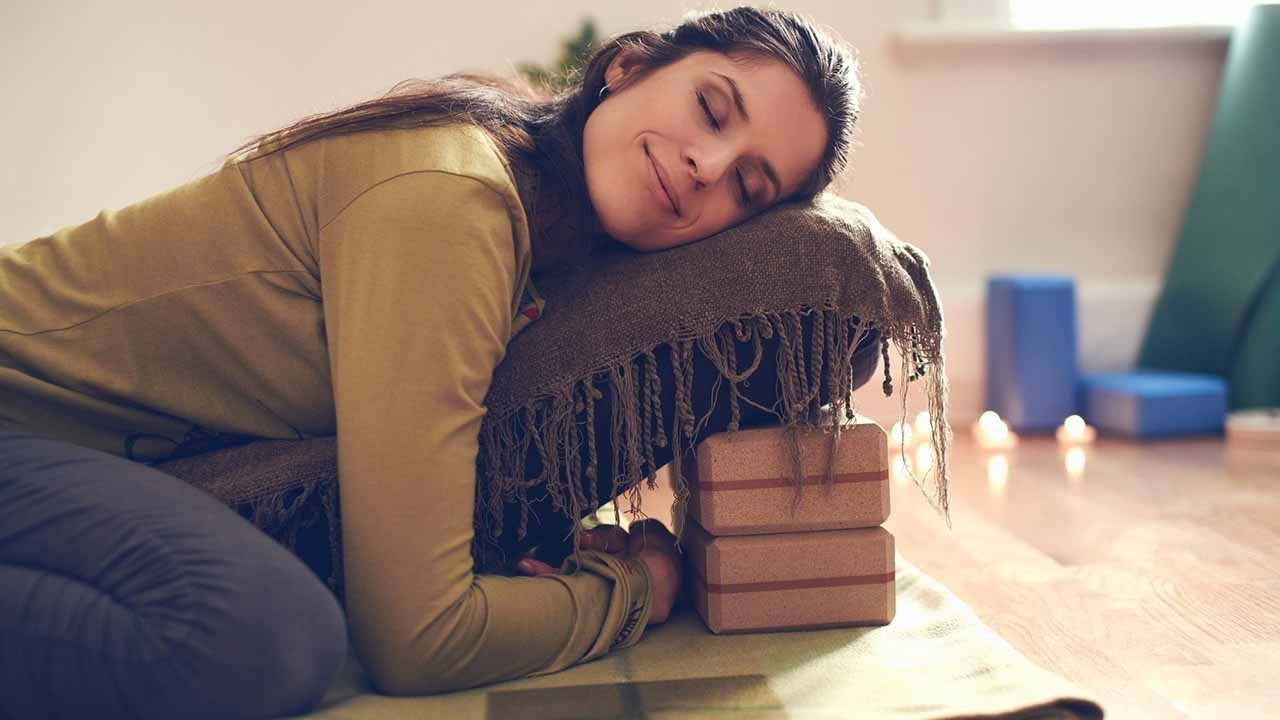What's Restorative Yoga?

If you want to use yoga to balance out the busy-ness and stress of modern life, restorative yoga could be the practice for you. Learn more about this slow-paced style that helps restore the nervous system and calm the mind.
Why do restorative yoga?
The purpose of restorative yoga is to shift the mind and body from fight or flight to rest and digest - to activate the parasympathetic nervous system which helps:
- The immune system to function better
- The digestive system to function better
- Heart rate and blood pressure to lower
- Stress hormones to regulate
Among many other benefits. Relaxing, restorative practices are largely missing from modern fast-paced living, so you can see how people might end up sitting in the sympathetic state for long periods of time.
Humans are capable of handling stress and can even benefit from it at times. However, we aren't designed to sustain it for ongoing periods without regulating back to 'normal'.
What is restorative yoga?
This style of yoga is truly about slowing things down, and any movement is done very slowly with intention and purpose.
Asanas, or poses, are held for long periods of time - usually around 10-15 minutes, possibly as long as 20 minutes. So in your average 90-minute yoga class you might only do six or seven poses. These are all seated or reclined to allow you to deply relax.
To enable you to remain comfortably in the poses for so long, props are used such as blankets, bolsters, straps and blocks.
What are some poses I can try?
Supta Baddha Konasana (Reclined Butterfly Pose) can be modified by setting up a bolster on an angle with one or two blocks under the top end of it. Position your sitbones at the base end of the bolster and lie yourself down. Bring the soles of your feet in towards your groin and let the knees open outwards. Support the outside of your thighs by either placing additional blocks or small pillows under them, or roll a blanket and place on top of your feat, weaving the ends under your thighs. Arms are at the sides of your body, relaxed, with palms rotating upwards.
Balasana (Child's Pose) can be adjusted by lying yourself on top of a bolster so that one end is between your thighs, the other end underneath your head. Turn your head to one side so that your ear is on the bolster, and your arms can either come to the sides of your body or you can wrap them under the bolster. For an alternate version you could place one or two blocks under the head-end of the bolster to elevate it.
For additional benefit, you might like to cover yourself with a blanket, or if facing upwards in a pose, you could use a weighted eye pillow.
Image / DepositPhotos









